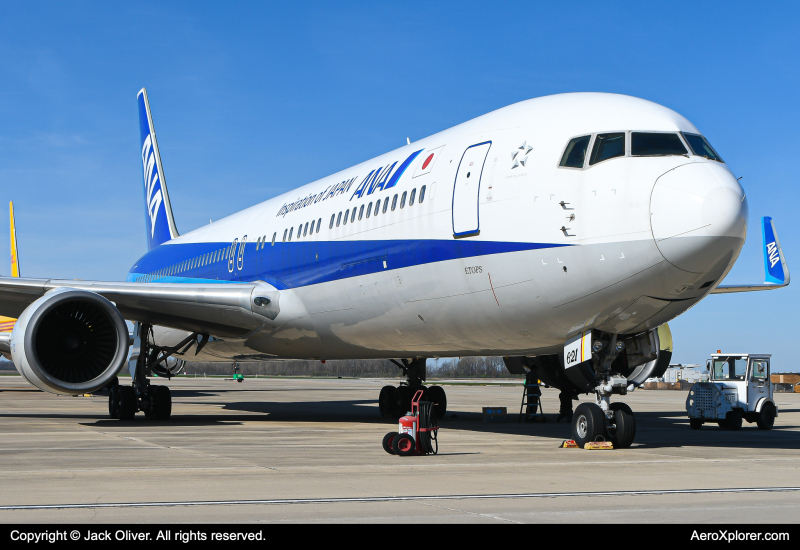In aviation, the aircraft condition monitoring system (AHMS) plays an important role. It offers a proactive strategy for management and assurance of aircraft safety. As newer technologies develop, the importance of AHMS systems continues to grow. It helps increase the general safety of the aircraft. It lowers costs and boosts productivity in airline operations. The system continually tracks a variety of data sets and performance metrics. The data helps identify any problems within the aircraft's internal environment. They evaluate the general condition of the aircraft. This enables preventive maintenance approaches. Here is a guide to the airplane condition monitoring system.
Purpose of Aircraft Health Monitoring System (AHMS)
AHMS is an innovative technology fitted in an aircraft. Its goal is to track and evaluate the condition of an airplane’s vital parts. Its primary goal is to identify and forecast any possible problems. Its forecasting capabilities help engineers take proactive preventive maintenance. It reduces the chances of unplanned downtime. The AHMS system keeps an expansive range of aircraft parts under check. They include:
- Engines
- Avionics
- Airframe structures
- Hydraulics
The AHMS environment is connected to several computer systems. One of the computers that supports multiple monitors is a MacBook. The Mac multiple monitors communicate with other monitors located in ground monitoring rooms. The team on the ground or aircraft may experience monitor connection problems. The main one is the second monitor not working. The problem can be caused by a conflicting program or hardware issues. It can be corrected by restarting the computer. Rolling back to a previous date can help the drivers function well again.
The aircraft health management system is composed of a variety of sensors. It features devices for collecting data and sending it in real time. The data sent shows the aircraft’s vibration rate. It indicates its temperature and pressure levels including many other conditions.
.jpg)
Implementation of the AHMS
The aircraft monitoring system includes sensors and a data transmission system. The sensors form an extensive system spread across the aircraft. They gather useful information and send it to a centralized control system. The work of the centralized system is to collect and evaluate the data sent from the sensors.
Beyond the airplane sensors and central mechanism, the aircraft is built with a complicated communication system. It sends communication to the ground team no matter where the aircraft is. The data goes through a secure system connected through satellites. The remotely located team analyzes the data to generate a report for insights. It allows the team to monitor the aircraft’s health and decide on the best action.
The data system features an integrated system for data analysis. It is a suite comprising various applications. The software processes the data sent from the aircraft. It analyzes it and creates a visual presentation using several computer programs. The system leverages the latest technologies to continuously offer proactive preventive maintenance. It features every aircraft part condition code. It highlights the code of the part if there are any issues.

AHMS Functionalities
The AHMS is capable of working beyond data generation. It provides control teams with the capacity to forecast and track developing issues. It lets them take action and resolve the issues. If not resolved in time, they may cause serious problems in the aircraft. Its integration into the aircraft system helps extend the lifespan of the aircraft. It provides three key functionalities as follows.
- Forecast-based maintenance. The system leverages different analyses to gather and process data. It makes use of historical data to suggest possible problems and their remedies. Forecasting the problems that might happen helps the ground team warn pilots. It senses the minutest changes and sends signals. The data allows maintenance teams to adjust their schedules to carry out maintained procedures in real time.
- Keeps performance data. The AHMS keeps the performance of the aircraft on track. It ensures things like engine and thrust are perfectly working. It monitors fuel efficiency and things such as corrosion. It ensures the entire structural integrity is running well.
- Diagnoses faults. The system also diagnoses faults and recommends action. If not well monitored, the faults could cause failure in the entire system. It gives the maintenance team an idea of the root cause. This lets the team work directly on the problem area instead of guessing.

Benefits of AHMS
The AHMS offers many benefits to the aviation sector. This technology has helped solve most of the problems experienced in the aviation sector. For instance, they may help send a report of the speed monitored by aircraft and analyze it. The aviation sector gets different benefits from AHMS.
Ensures there is enhanced safety by identifying and mitigating any possible threats.
Cushions aviation companies from incurring unforeseen maintenance costs.
Ensures the companies adhere to regulations and operations standards.
Conclusion
AHMS offers aviation companies a proactive service management approach. Developing technology is helping improve the functionalities of the system. It promotes an increase in efficiency and reduces maintenance expenditure. Due to the effectiveness of the system, companies improve the safety of passengers. It helps prolong the lifespan of their fleets.
Comments (0)
Add Your Comment
SHARE
TAGS
INFORMATIONAL Health Technology Sponsored AHMS Aircraft Health Monitoring System AircraftRECENTLY PUBLISHED
 Learjet Owned By Vince Neil Crashes Into Gulfstream Jet, 1 Fatality Confirmed
On February 10th, around 14:30 local time, a Learjet private jet aircraft crashed into another private jet after landing at Scottsdale Airport (SCF) in Arizona.
NEWS
READ MORE »
Learjet Owned By Vince Neil Crashes Into Gulfstream Jet, 1 Fatality Confirmed
On February 10th, around 14:30 local time, a Learjet private jet aircraft crashed into another private jet after landing at Scottsdale Airport (SCF) in Arizona.
NEWS
READ MORE »
 Seattle Plane Strike 2025: Japan Airlines and Delta Collision Raises Safety Concerns
Seattle-Tacoma International Airport saw a concerning incident on Wednesday morning when a Japan Airlines (JAL) plane clipped a parked Delta Air Lines jet while taxiing. Thankfully, no one was injured, but passengers described the collision as a frightening experience.
NEWS
READ MORE »
Seattle Plane Strike 2025: Japan Airlines and Delta Collision Raises Safety Concerns
Seattle-Tacoma International Airport saw a concerning incident on Wednesday morning when a Japan Airlines (JAL) plane clipped a parked Delta Air Lines jet while taxiing. Thankfully, no one was injured, but passengers described the collision as a frightening experience.
NEWS
READ MORE »
 Ethiopian Airlines Expands Cargo Fleet with New Boeing 777 Freighter
Ethiopian Airlines has expanded its cargo fleet with a brand-new Boeing 777 Freighter, registered as ET-BAB (MSN 68140). The aircraft was delivered directly from Boeing’s factory in Everett, Washington, USA, and landed at Addis Ababa Bole International Airport at 3:41 PM (GMT+3) on Wednesday, January 22, 2025.
NEWS
READ MORE »
Ethiopian Airlines Expands Cargo Fleet with New Boeing 777 Freighter
Ethiopian Airlines has expanded its cargo fleet with a brand-new Boeing 777 Freighter, registered as ET-BAB (MSN 68140). The aircraft was delivered directly from Boeing’s factory in Everett, Washington, USA, and landed at Addis Ababa Bole International Airport at 3:41 PM (GMT+3) on Wednesday, January 22, 2025.
NEWS
READ MORE »



.jpg)

